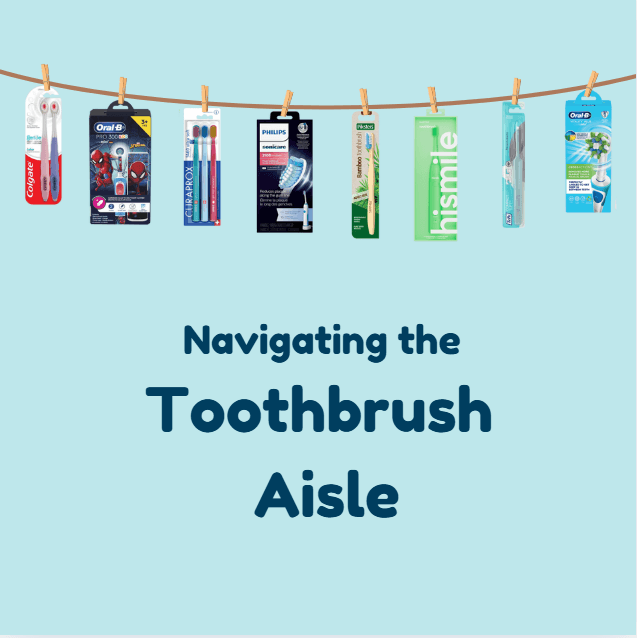
Choosing the right toothbrush can feel overwhelming with so many options available.
Whether you're standing in front of a manual or electric toothbrush aisle, we’re here to help you find the best fit for your oral health.
Types of Toothbrushes
Manual Toothbrushes
Manual toothbrushes are affordable and allow for complete control over your technique. To maximize effectiveness, hold the brush at a 45-degree angle to your gums, apply gentle
pressure, and use small circular motions. Clean all surfaces—outer, inner, and chewing—and brush your tongue gently. Aim for two minutes of brushing, giving equal attention to each quadrant.
Electric Toothbrushes
Electric toothbrushes, like Oral-B models, offer superior plaque removal and features such as timers and pressure sensors. Many use oscillating motion, allowing the brush head to move in circles for better plaque removal around each tooth. Research shows that these brushes can significantly reduce plaque and gingivitis, making them a smart investment for oral hygiene.
Other Types of Brushes
U-Shape Toothbrushes
While U-shape toothbrushes may seem convenient, they often fall short in effectiveness. They can miss critical areas, encourage poor brushing habits, and lack the ability to apply
the right amount of pressure, which can be detrimental to gum health.
TePe End-Tuft Brushes
For those tricky spots that often go neglected, consider adding the TePe End-Tuft Brush to your oral care routine. This brush features a small, dense head with soft bristles, making it ideal for:
Wisdom Teeth: Maneuver easily around hard-to-reach back teeth.
Behind Wire Retainers: Clean areas around braces and retainers effectively.
Gum Recession Areas: Provide gentle cleaning for sensitive areas without causing
irritation.
Design Considerations
Once you’ve decided on the type of toothbrush, consider the following factors:
Bristle Type Matters
Soft bristles are recommended by dentists as they are gentle on gums and enamel. Medium and hard bristles might seem appealing but can lead to damage over time.
Head Size: A Personal Preference
Toothbrushes come in various sizes. A smaller head allows for easier maneuverability, especially in tight spaces like the back of your mouth. If you have a smaller mouth or need to reach around braces, a compact head may be more suitable.
The Importance of Design
Look for toothbrushes with comfortable handles that provide a good grip. Ergonomic designs can significantly enhance your brushing experience, making it easier to brush effectively for the recommended time.
The Toothbrush Care Routine
No matter which toothbrush you choose, proper care is essential. Replace your toothbrush (or brush head) every three to four months, or sooner if the bristles are frayed. Ensure you’re rinsing your brush thoroughly after each use and storing it upright to air-dry.
Consult Your Dentist
Always consult your dentist for personalized recommendations based on your oral health needs. They can guide you in choosing the right toothbrush and techniques, ensuring optimal care. Regular check-ups also help monitor your habits and keep your smile healthy.